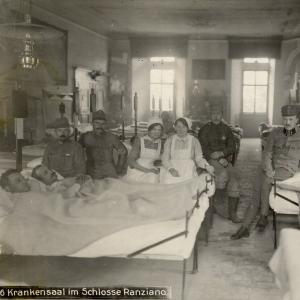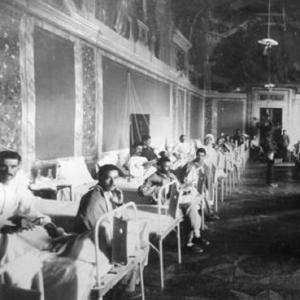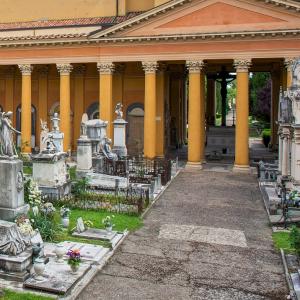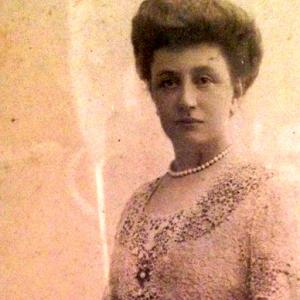Scheda
A Bit of My Life (Un po’ della mia vita) is the title of Stella Cillario’s memoir (Bologna, 29 December 1877- 10 November 1951), daughter of Luigi Cillario and Countess Elena Monaco, of who photographic images of them show together with their sweet and melancholic natures, she is illuminated by two large blue eyes, an elegant figure, that is almost erased by the many years of choosing to wear austere and dark clothing reflecting an existence generously devoted to others in her commitment to education and sustaining her fervent faith.
Reaching a mature age, feeling the need to remember, replacing those that are forgotten with a story as a testimony to her family members or perhaps to herself in a search for her own identity; a desire to connect with other women in her same condition, such as her friend Gida Rossi, who was also a teacher and a Red Cross nurse, author of Le memorie di una vecchia zitella (The memories of an old maid - Cappelli, Bologna, 1934), a volume for which Stella wrote a series of inductory texts in her beautiful prose and full of passion for noble causes. It may have been precisely this book that caused Stella to organise her own collection of written memories chronologically and interspersed with documents, letters, and newspaper clippings. She balanced her existence and her inner dialogue by choosing the most important moments from her correspondences and her life that she wanted to leave a mark with, as a trace of herself: but she did not finish, for an unknown reason. She writes that she was preparing to destroy her copious correspondences with beloved ones (“I continue, not without pain, to destroy the correspondences dear to my heart, but devoid of interest for those who will come after me, although it is a magnificent testimony of the goodness their affection, and of the esteem of my companions. To me, it also seems as a duty towards them, those who speak to me in intimately: alone to one.” (Bologna 1943-October 1944).
Of a shy and reserved character, Stella, as far as we know, did not have many personal sentimental events, and despite a nineteenth century education and coming from a wealthy and protective family, she worked in various occupations as a teacher and for different charities, revealing an independent and in some ways a modern female figure: when, for example, she was still young, she did not fear moving away from her family, moving instead for the diverse and sometimes uncomfortable places to work, such as in 1908 of Castroreal in Siciliy, and then couragiously testing herself as a Red Cross nurse in numerous military hospitals, also in war zones. She taught humanities and she also had a brief debut as an academic; the first part of her life revolved around her charismatic teacher and mentor Severino Ferrari, who later became a faithful guardian and organizer of documented heritage. Later she studied the shorthand writing system and the Braille language, which she used to translate works for the blind at the Cavazza Institute of Bologna. During her long life she witnessed and documented political events occuring in the background and she narrated such in her copious personal archives full of correspondences, postcards, and photographs, from which we have drawn and translated documents to outline a brief biographical profile. She was a teacher, student of Giosue Carducci andSeverino Ferrari. She attended the Magistero of Florence and the University of Bologna (where she attended lessons from Carducci and Ferrari). She devoted herself to teaching, and in 1908, she was entrusted as the chair of liberal arts at Castroreale where she also began to serve in the Red Cross, a service she continued until 1919. She dedicated herself also to transcribing Braille, such as Phaedo. She is buried in the Certosa cemetery of Bologna, Cloister VII – west portico, niche 115.
Translation from italian language by Holly Bean.








